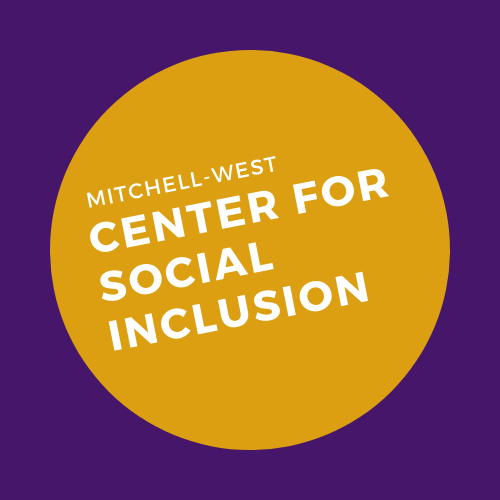Embodying Inclusive Teaching through Connection
Inclusive teaching refers to “pedagogy that strives to serve the needs of all students regardless of background or identity, and support their engagement with the subject material” (Yale Poorvu Center for Teaching and Learning, 2020). This involves intentionality and a focus on creating a learning environment where all students are treated equitably by having access to course materials and opportunities to succeed. Inclusive teaching acknowledges that identities (of both faculty and students) and systemic inequalities in our educational institutions and society at large affect teaching and learning. Kathryn Oleson’s book Promoting Inclusive Classroom Dynamics in Higher Education and the accompanying downloadable resources are a good place to start for a broad overview of practices that support inclusive teaching.
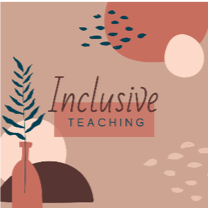
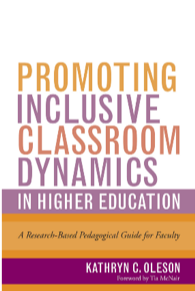
Learning from Each Other
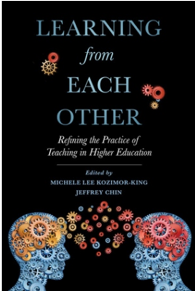
Several models of teaching and learning have been used as frameworks for developing inclusive practices such as critical pedagogy which is largely influenced by Paulo Freire), intersectional pedagogy, trauma-informed pedagogy (e.g., see Mays Imad’s work), and the community of inquiry (COI) model. I have previously written about the COI model and the application of it in online environments in a chapter in Learning from Each Other. COI is a process model that involves purposeful connections between students, the instructor, and course content (see Garrison, Anderson, & Archer, 2000). Social, cognitive, and teaching presence are all supported by using more equitable and inclusive practices.
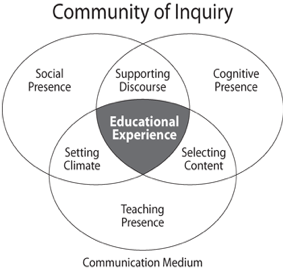
The Association of College and University Educators Inclusive Teaching Practices Toolkit was developed to support instructors in creating inclusive learning environments by using practices that foster a social, cognitive, and teaching presence from the first day of class. The toolkit provides free resources, including 10 inclusive teaching practices that can be used in online and face-to-face classes. These 10 practices include:
- Ensure your course reflects a diverse society and world.
- Ensure course media are accessible. (I would recommend the assistance of Jeremy Martin and his staff in Disability Support Services and the Educational Technology Services staff if you have questions about accessibility or universal design for learning.)
- Ensure your syllabus sets the tone for diversity and inclusion. (You can find examples of inclusion statements for your syllabi here.)
- Use inclusive language.
- Share your gender pronouns. (Here are some instructions for adding your pronouns to Canvas and Zoom.)
- Learn and use students’ preferred names. (UNA allows any student to request a preferred name change that is reflected in Canvas and the class roster.)
- Engage students in a small-group introductions activity.
- Use an interest survey to connect with students. (This can be done in Canvas using the survey option or through Qualtrics.)
- Offer inclusive office hours.
- Set expectations for valuing diverse viewpoints.
Now what? Inclusive teaching continues past the first day of the semester. The Bok Center for Teaching and Learning at Harvard University has compiled resources on active learning to guide you through practices that promote equity and inclusion in teaching and learning spaces. Another practice that has been particularly beneficial during COVID-19 and the move to remote/hybrid learning has been student check-ins. This is not only a way to get to know your students, but it helps create a sense of belonging and encourages greater student engagement. It may sound overwhelming or too time consuming. John Spencer, Assistant Professor of Education, outlines nine ways to do check-ins in his recent blog that consider class size and time. These include using a social-emotional pulse check, video updates, video check-ins, small group check-ins, email check-ups, short text check-ins, surveys, scheduled conferences, and phone calls. I had great success using a combination of email check-ins and scheduled conferences that helped with overall communication of course expectations, keeping students on track, and creating connection in the online learning environment. I chatted with students about their how they were doing, how COVID-19 was affecting their friends and families, their progress in my course, and their larger professional goals. Some of these conversations happened on lunch breaks or after students got off work and I even met some of their children who wanted to say hello on Zoom. The scheduled check-ins allowed for a connection that is often hard to find in online courses.
Are you looking for assistance to make your courses more inclusive? We have resources for you on our website and have a host of opportunities for you to learn from experts. In January, Leah Gilliam will be the Sunseri Series Speaker and their talk will examine diversity and gender equity in STEM. There are two speakers in February – Andrew Pegoda (co-sponsored by the College of Arts and Sciences) who will focus on rethinking the classroom curriculum with inclusive pedagogies and Unalome Counseling and Consulting (co-sponsored by the College of Education and Human Sciences) who will address the neuroscience of trauma. In March, Terrell Morton (co-sponsored by the College of Arts and Sciences) will address how identity frameworks and critical race theory can guide the development of more inclusive practices. We will wrap up our teaching series this semester with a faculty resource panel in April co-sponsored by the College of Arts and Sciences.
We hope to see you at these virtual events. For more information or for a teaching consultation, see una.edu/socialinclusion or email socialinclusion@una.edu.
